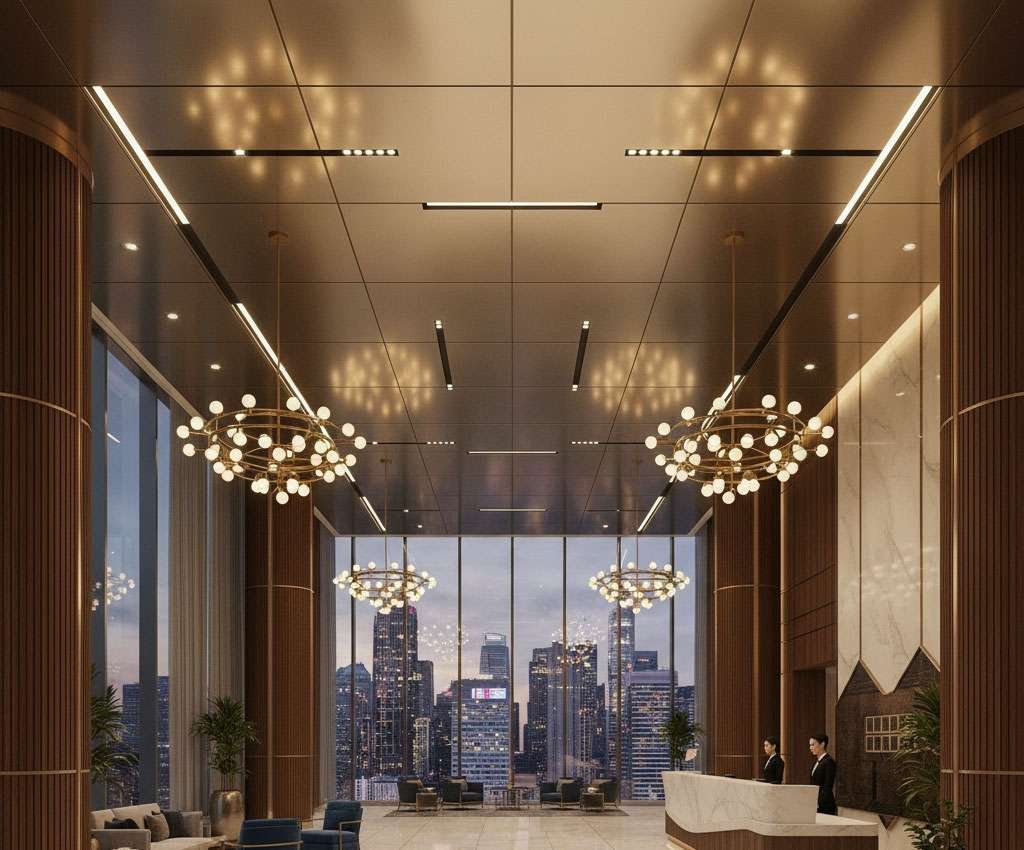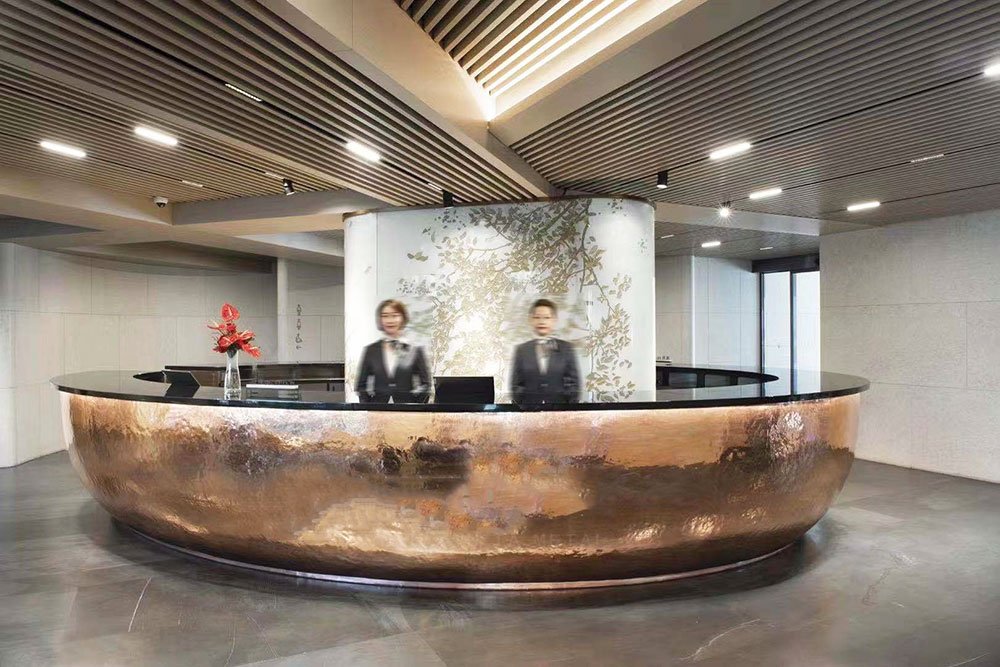Has Stainless Steel Become an Ideal Choice for Home Décor?
Table of Contents
In the recent wave of minimalist design trends, we have embraced simplicity and innovation in our material choices, with stainless steel emerging as a popular option.
But what is stainless steel exactly? What varieties does it come in? What are its applications in home décor? How does it compare to traditional materials? Does it offer a range of color options? And what about its cost? These are some of the questions we’ll address as we delve deep into this modern material.
Understanding Stainless Steel
Stainless steel is a type of steel that exhibits resistance against corrosion caused by air, steam, water, and other mild corrosive agents, as well as stronger ones like acids, alkalis, salts, and various chemical agents, leading to its alternate name, stainless acid-resistant steel.
In its application, steel that can withstand mild corrosive environments is known as stainless steel, whereas steel that can resist chemical corrosion is termed acid-resistant steel.
A common choice for interior decoration is 304 stainless steel, renowned for its robustness, resistance to scratches, impact, corrosion, and fading, ensuring both durability and aesthetic appeal in home décor.
Classification of Stainless Steel for Home Decoration
PVD Coated Stainless Steel
This involves applying a film to the stainless steel, offering a broader range of color choices and enhanced texture. A matte finish is popular in home settings, and coated stainless steel achieves this texture splendidly.
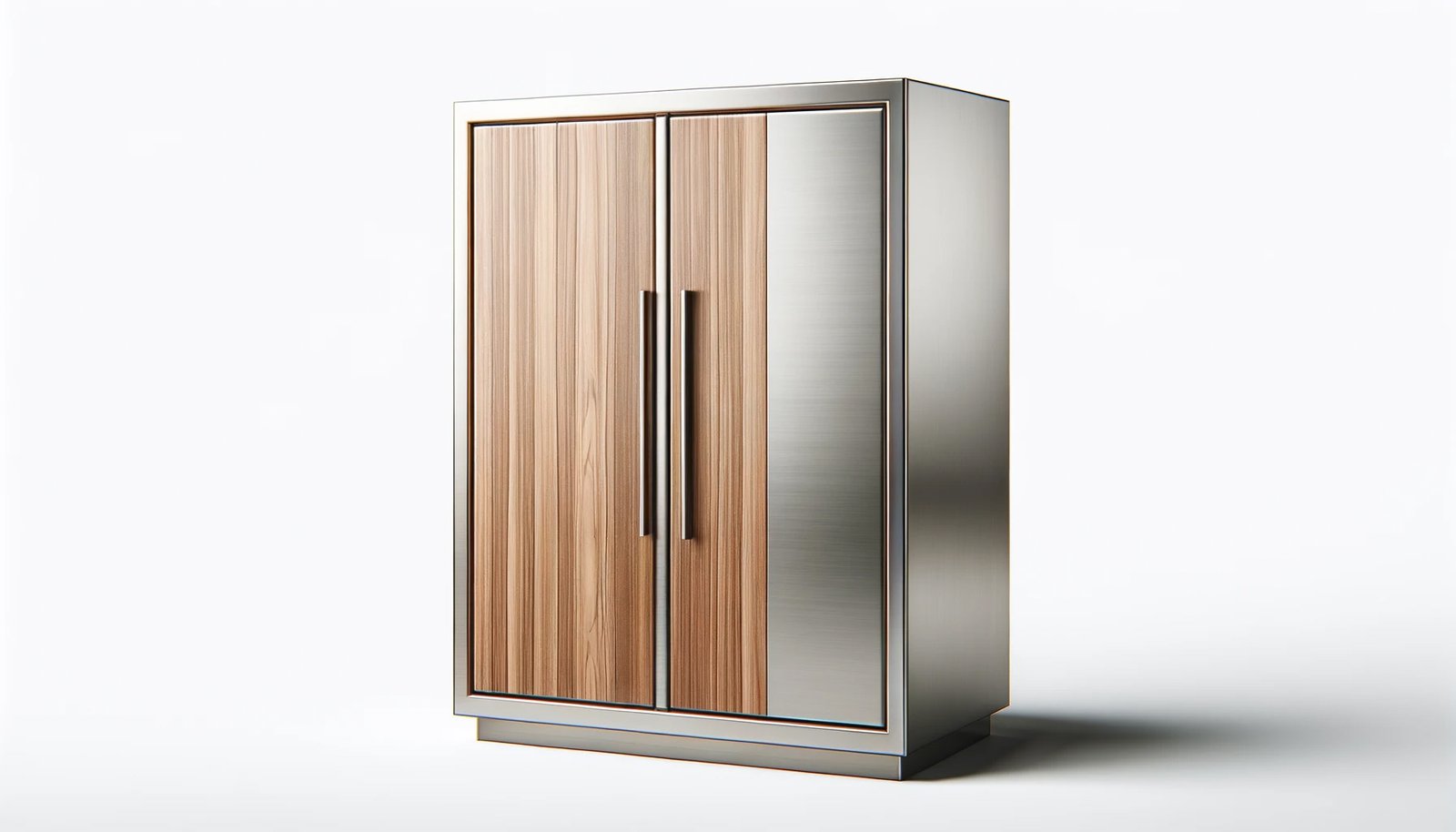
▲Integrating coated stainless steel in cabinetry, where it meets wood, injects dynamic energy into the space.
Mirror Stainless Steel
Through special treatment, stainless steel can be given a mirror-like finish, amplifying indoor lighting and creating an illusion of extended space. This effect is particularly beneficial in smaller spaces, as it fosters a feeling of expansiveness.
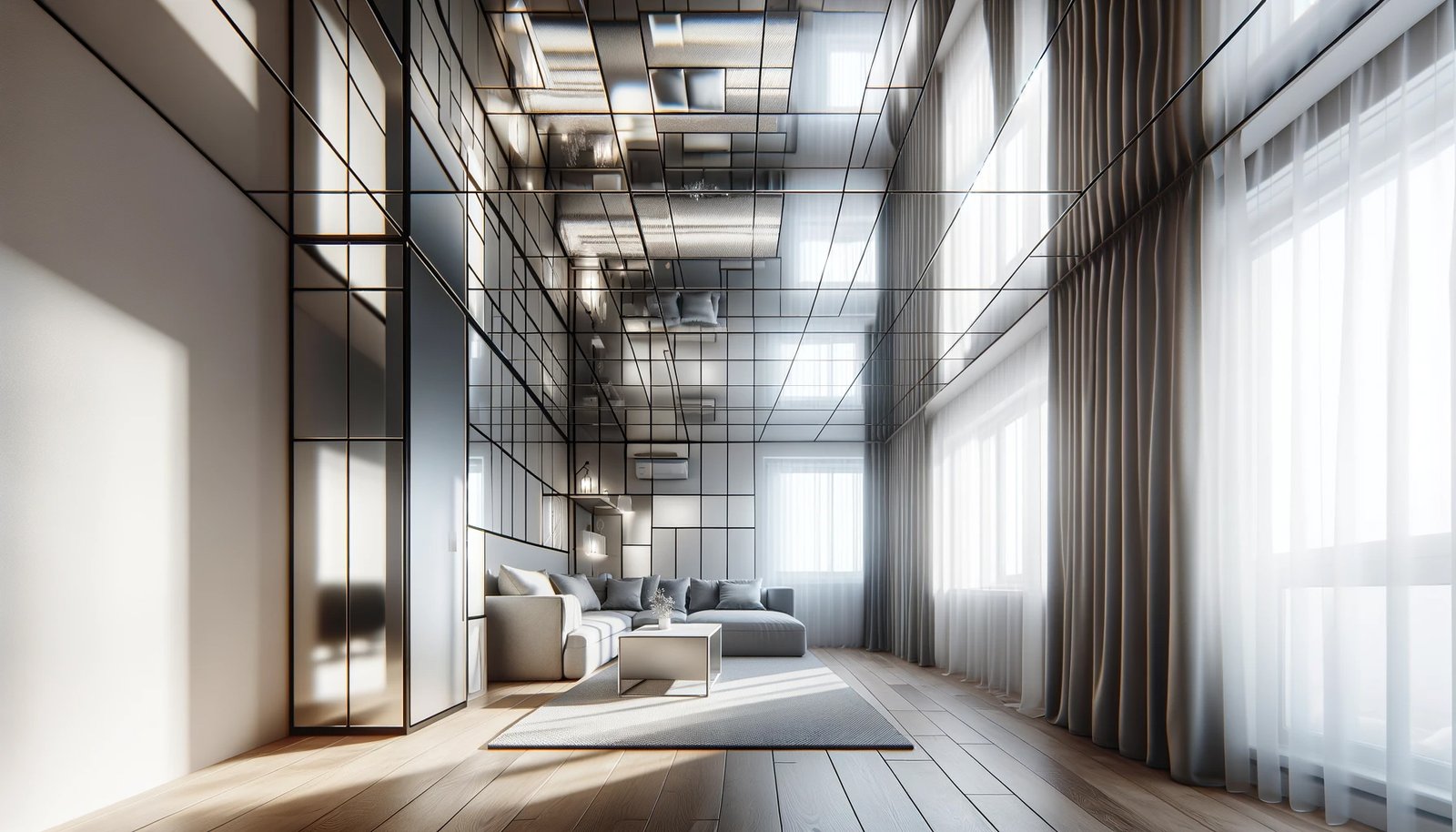
▲Utilizing mirror stainless steel for ceilings and walls can broaden visual perception and lessen any sense of confinement.
Water Ripple Stainless Steel Plate
This style is frequently used in ceiling and other overhead applications. When combined with strategic lighting, it produces a visually striking effect reminiscent of shimmering water.

▲The water wave texture on the stainless steel surface adds a significant artistic element.
Perforated Stainless Steel Sheet
A perforated stainless steel plate, used in various aspects of home décor, creates intriguing light and shadow play under natural and artificial lighting, enhancing the home’s dimensional feel.
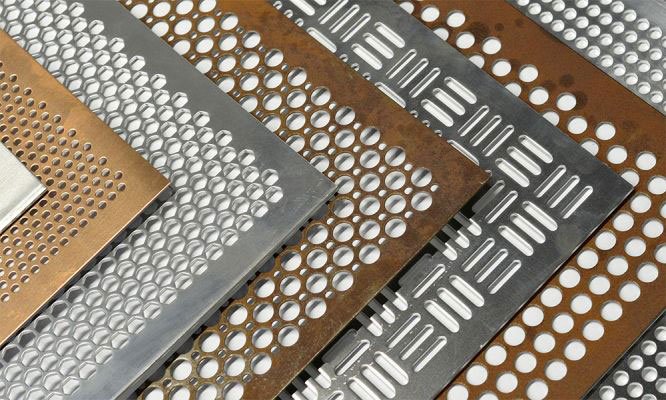
▲Customization is key with perforated stainless steel, as the size, shape, and pattern of the perforations can be tailored to specific design needs.
Optimal Placement of Stainless Steel in Interior Design
Stainless steel has become a versatile and stylish element in modern interior design, frequently used in various key areas such as skirting lines, trimmings, and door and window frames. Its application is particularly effective in minimalist styles, adding a sleek and sophisticated touch to spaces.
Skirting Boards
Stainless steel skirting is a perfect match for minimalist homes.
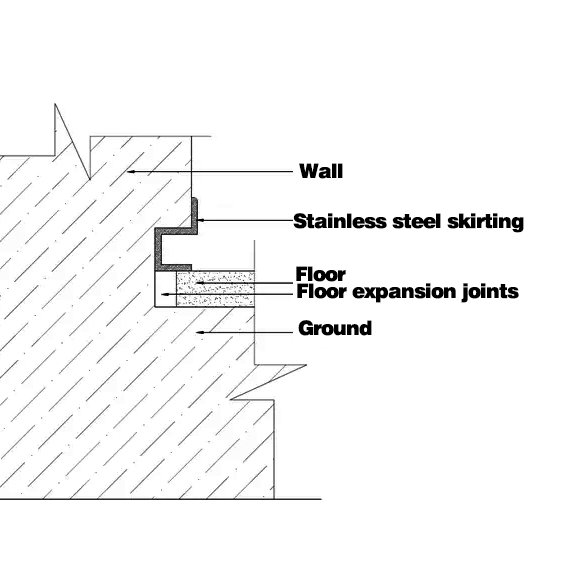
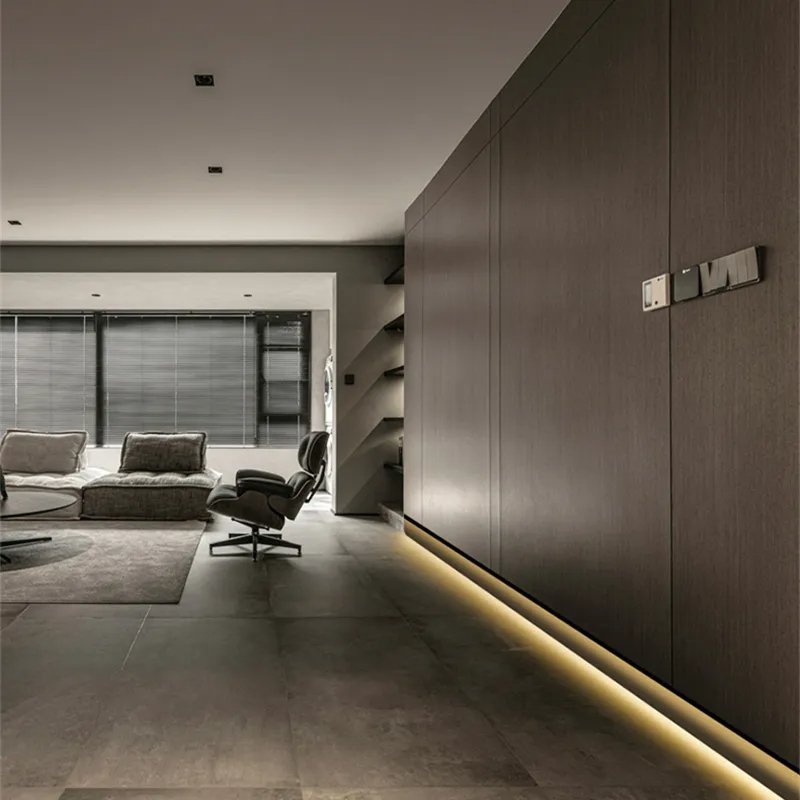
▲A common approach involves cutting a slot near the floor, into which the flooring is inserted, followed by a stainless steel cover.
▲For an enhanced effect, embedding lighting within these skirting lines can create a serene and naturally flowing ambiance.
Trim and Closing Details
Stainless steel is effectively used for wall and floor recesses, with embedded lines adding a sleek finish.
When used in ceilings or as wall trims, especially with lighting, it accentuates minimalist aesthetics and enhances the spatial flow of light.
Door and Window Covers
Using stainless steel for door and window frames not only protects the structure but also adds a touch of elegance and luxury. It’s particularly effective in preventing warping or molding due to weather exposure.
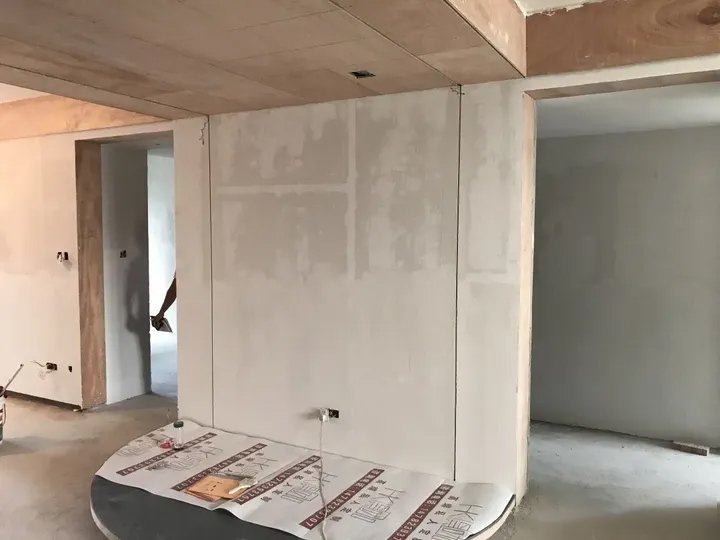
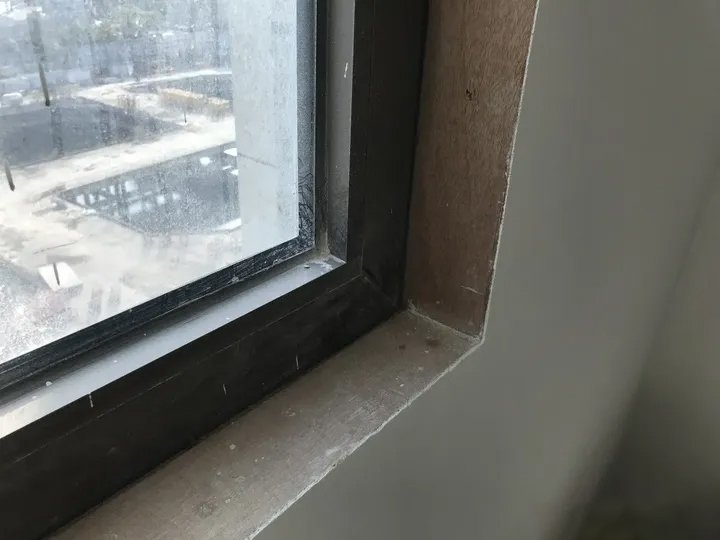
▲Stainless steel door cover in the woodworking stage to use MDF base
▲The construction of stainless steel window cover and stainless steel door cover is similar, also need woodworking stage with medium density fiberboard base
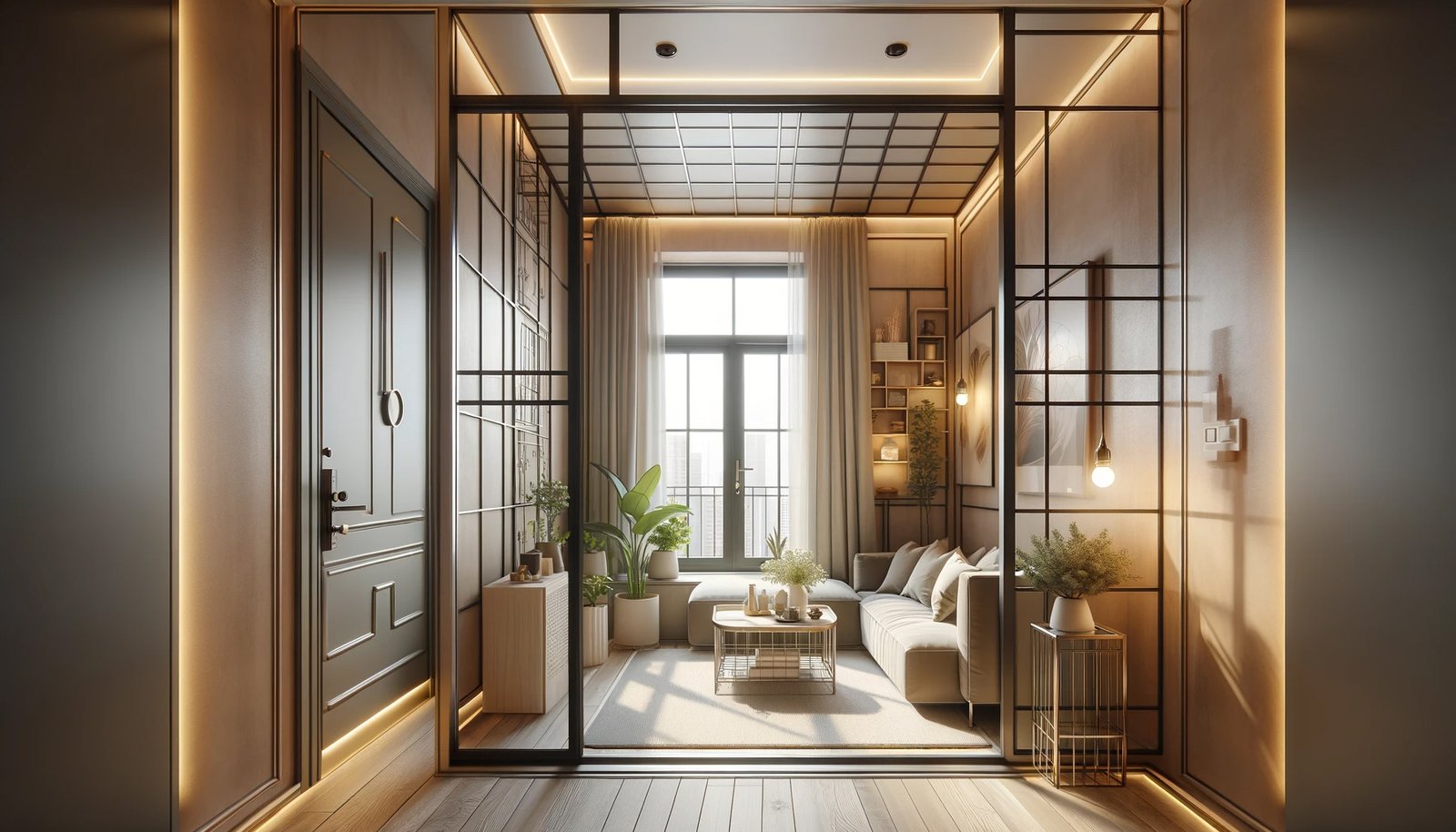
▲The window cover and the door cover use stainless steel, has a protection wall body function, lets the door appear more slender, exquisite and luxurious.
Decorative Surfaces
Implementing stainless steel on walls and other decorative surfaces adds a seamless transition and smooth lines, enriching the spatial depth.
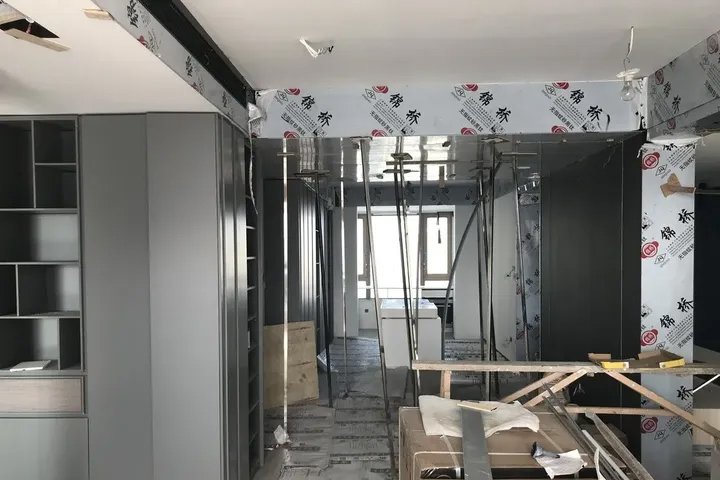
▲Wall stainless steel construction process
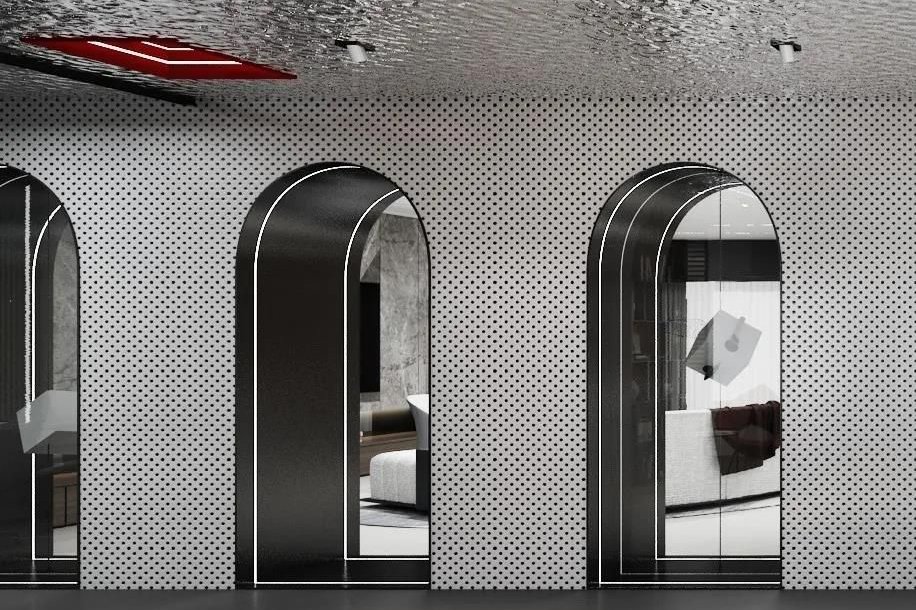
▲Options include corrugated designs for ceilings and perforated styles for walls, elevating the space’s sophistication.
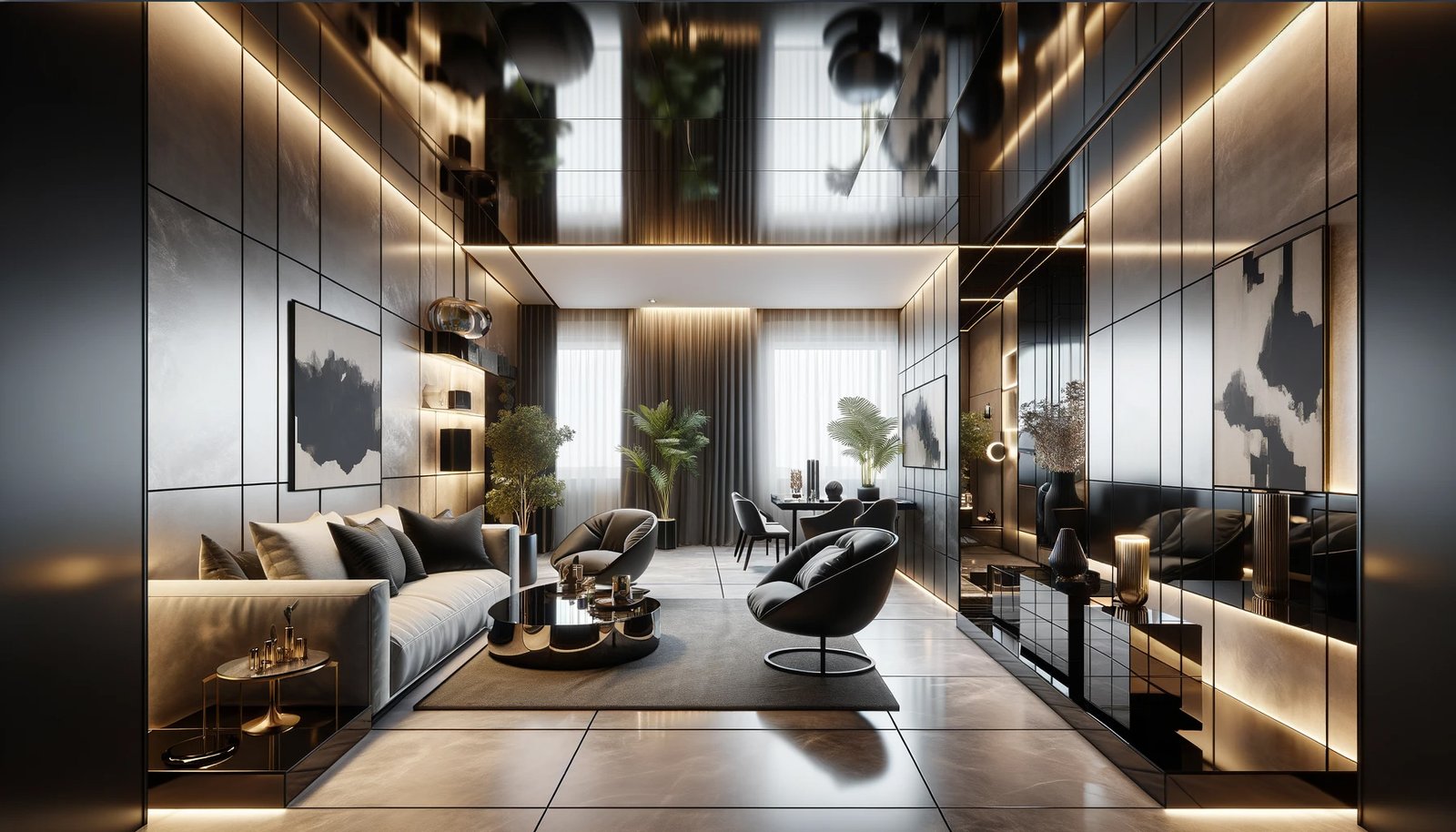
▲Stainless steel used in the wall and other decorative surface space, so that the whole space has a level, more natural and delicate.
Cabinetry
Custom cabinets made of stainless steel offer a refined texture, reducing the bulky appearance and ensuring durability and deformation resistance.
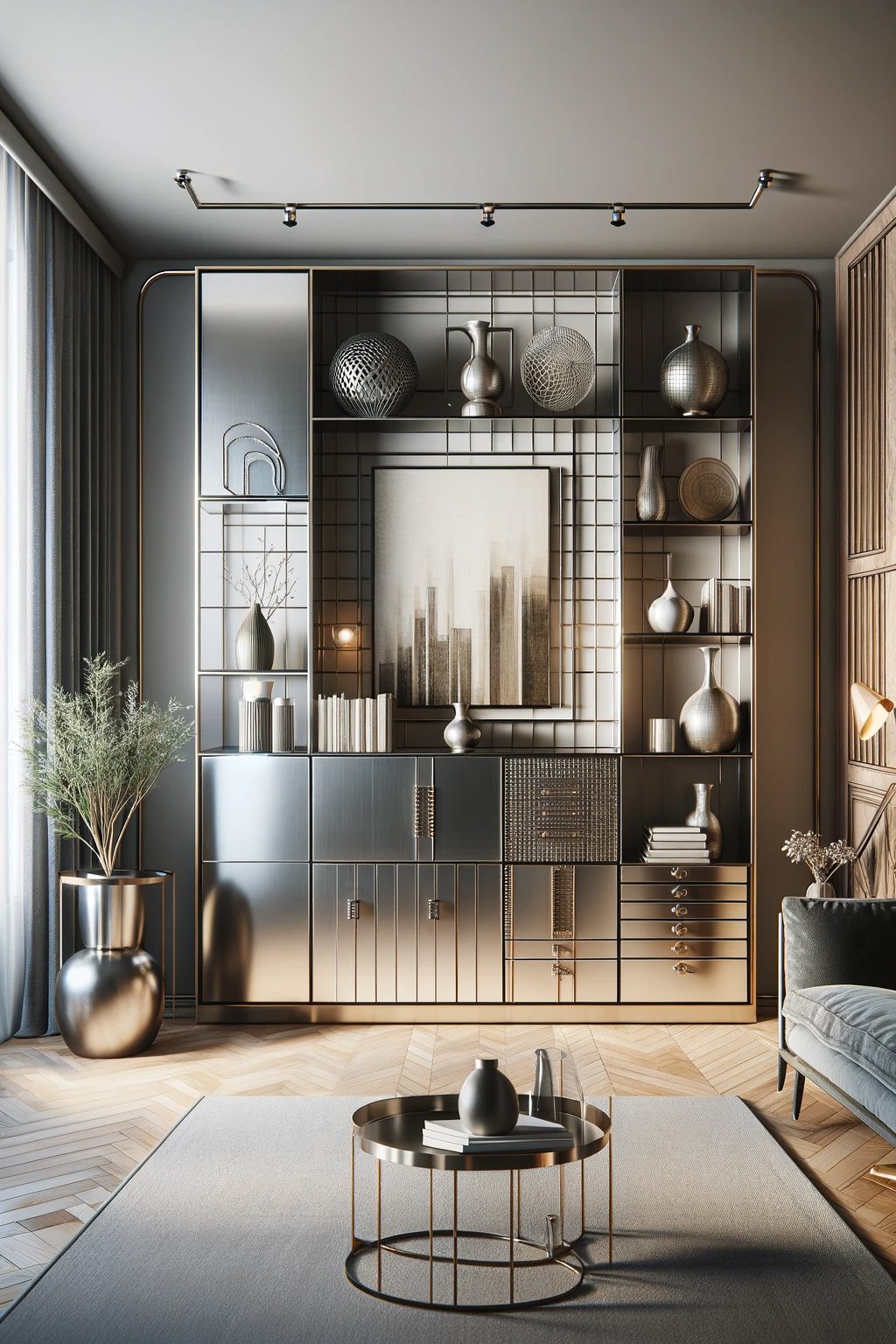

Niches
Incorporating stainless steel in wall niches brings practicality and elegance to any space. These niches are not only waterproof and durable but also customizable in size to suit specific needs. Unlike traditional tile niches, which can look unsightly due to poor field cutting and visible gaps, stainless steel niches provide a sleek, clean look. They are an affordable solution, ideal for small-sized niches, effectively resolving any aesthetic concerns while maintaining functionality and style.
Countertops
Matte stainless steel countertops exude a high-end texture. Compared to tiles, they are gap-free, impermeable, impact-resistant, and maintain their color without staining, making them easy to clean.
Floor Drains
Slim stainless steel floor drains add an advanced touch to spaces.


Options include long strip drains for rapid drainage and rust resistance, and wall-mounted rectangular drains that blend seamlessly with floor tiles, offering an invisible look and a minimalist, tech-forward design.
Stainless Steel VS. Other Home Decoration Materials
Each material used in home decoration, including wood, gypsum, PVC, stone, and stainless steel, has its unique advantages and disadvantages. For those who prefer a minimalist home style, some materials may be more suitable than others.
Wood
- Advantages: Resistant to corrosion and offers good workability.
- Disadvantages: Susceptible to humidity and temperature changes, leading to potential deformation and cracking. Thus, its use in linear decorations is limited.
Gypsum
- Advantages: Cost-effective and suitable for decorative lines in European and American style walls.
- Disadvantages: Prone to yellowing, deformation, and dust accumulation from weathering. It can develop mildew when exposed to water and darken over time. Gypsum is also easily damaged by sharp objects, leaving irreversible marks.
PVC Material
- Advantages: Affordable, available in various styles, and resistant to water-induced expansion and cracking.
- Disadvantages: Not fireproof, and being plastic-based, it’s not environmentally friendly. It can break easily and often appears cheap, making it rare in home decoration but more common in rental properties.
Stone
- Advantages: Conveys a sense of luxury and is ideal for high-end wall backdrops.
- Disadvantages: Not recommended for extensive outlining due to its heavy style and slight radiation emissions. Lacks lightness and is less versatile.
Stainless Steel
- Advantages: Reasonably priced and boasts high hardness, corrosion resistance, mirror-like finish, water resistance, abrasion resistance, and durability against climate changes. Versatile for use throughout the home.
- Disadvantages: Its metal texture can feel cold, making it most suitable for modern and minimalist styles.
Price Hierarchy: stone > Wood > stainless steel > gypsum line > PVC
Durability Ranking: stainless steel > stone > PVC > wood > gypsum line
Feeling of Lightness: stainless steel > PVC > wood > gypsum line > stone
Given these considerations, for those who prefer a minimalist style, stainless steel emerges as a highly suitable material. It strikes a balance between affordability and durability while providing a light and airy feel. This makes it a more appealing choice compared to other commonly used materials in the realm of minimalist interior design.
Stainless Steel Color Options
The color choices for stainless steel in interior design are extensive, thanks to advanced plating processes that enrich the palette. Options like titanium gold, rose gold, black titanium, sapphire blue, and classic titanium offer durable and diverse hues. These colors can be chosen to complement and enhance different spaces.
The surface finish of stainless steel also contributes significantly to its aesthetic appeal. Options include matte and plated surfaces, each providing its unique texture—matte for a subdued, elegant look and plated for a brighter, more lustrous finish.
You Might Also Like
Please Share This
Recent Posts
- Stainless Steel Lettering: Elevate Your Interior and Branding Design
- The Art and Function of Architectural Perforated Metal in Modern Design
- Enhancing Outdoor Spaces with Corten Steel Landscape
- Transforming Outdoor Spaces: The Beauty and Function of Metal Privacy Screens for Patios and Gardens
- The Unique Charm of Hammered Texture in Modern Metal Design

